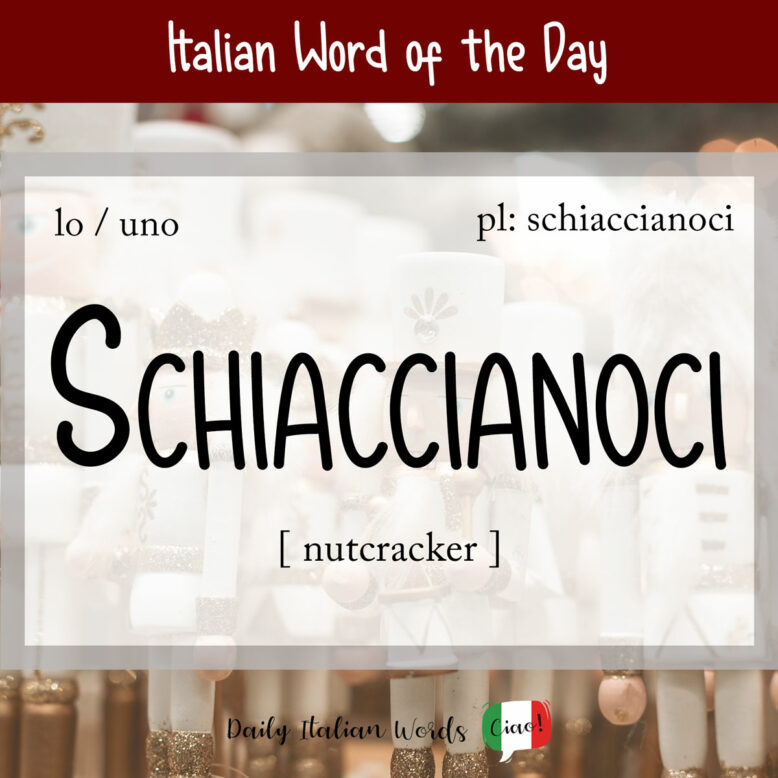One of the most recognisable symbols of Christmas is the nutcracker, known as a schiaccianoci in Italian.

Schiaccianoci is made up of two parts: the verb schiacciare (to crush) and the plural noun noci (walnuts). It is an invariable masculine noun, which means its form does not change in the plural.
- lo schiaccianoci = the nutcracker
- gli schiaccianoci = the nutcrackers
- uno schiaccianoci = a nutcracker
- degli schiaccianoci = (some) nutcrackers
Dove vogliamo mettere lo schiaccianoci quest’anno? Sul davanzale?
Where do we want to put the nutcracker this year? On the windowsill?
The classic standing wooden soldier nutcracker (soldatino schiaccianoci) originated in the Sonneberg and Ezerberge regions of eastern Germany during the early 19th century. The commercial production of these wooden nutcrackers began in 1872 with Wilhelm Fuchtner.

While the primary purpose of these objects was initially to crack nuts using the soldier’s lower jaw, they have evolved into widely embraced decorative ornaments in households worldwide, including Italy.
Ho rotto il guscio della noce con la mandibola dello schiaccianoci.
I broke the walnut’s shell with the nutcracker’s lower jaw.
Heather Broster is a graduate with honours in linguistics from the University of Western Ontario. She is an aspiring polyglot, proficient in English and Italian, as well as Japanese, Welsh, and French to varying degrees of fluency. Originally from Toronto, Heather has resided in various countries, notably Italy for a period of six years. Her primary focus lies in the fields of language acquisition, education, and bilingual instruction.


